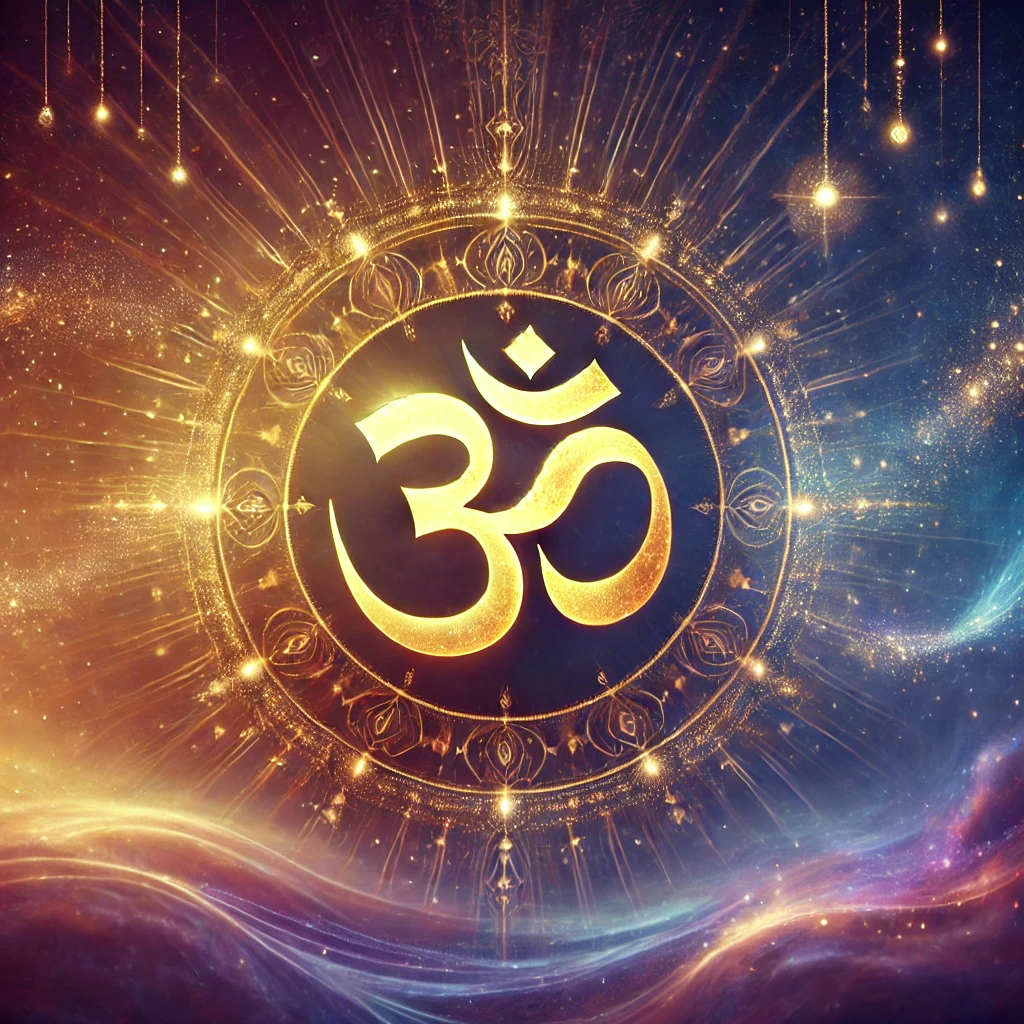
Sound Om and Its Spiritual Significanc
Introduction
In the realm of spirituality and meditation, few symbols hold as much reverence and significance as Om (ॐ). Recognized globally as a profound spiritual icon, Om serves as a bridge between the material and the divine, embodying the essence of the universe. Whether you are a seasoned practitioner or someone embarking on a spiritual journey, understanding the depth and meaning of Om can enhance your practice and connection to the sacred.
What is Om?
Om, often pronounced as “Aum,” is a sacred syllable in Hinduism, Buddhism, and Jainism. It is considered the primordial sound from which the universe originated. In Sanskrit, Om is composed of three sounds: A, U, and M, each representing different aspects of existence and consciousness.
The Three Sounds of Om
- A (अ): Symbolizes the waking state, the physical realm, and the beginning of creation.
- U (उ): Represents the dreaming state, the mental realm, and the continuation of existence.
- M (म): Denotes the deep sleep state, the spiritual realm, and the dissolution of the universe.
Together, these sounds encapsulate the entirety of human experience and the cyclical nature of life.
The Spiritual Significance of Om
Om is more than just a sound; it is a vibration that resonates with the very fabric of the cosmos. Its spiritual significance can be understood through various perspectives:
Universal Connection
Om is believed to be the sound that created and sustains the universe. Chanting Om aligns the practitioner with this universal energy, fostering a deep sense of connection and unity with all that exists.
Meditation and Mindfulness
In meditation, Om serves as a focal point, helping practitioners quiet their minds and enter a state of deep contemplation. The repetition of Om facilitates mindfulness, allowing individuals to transcend their thoughts and experience inner peace.
Symbol of Divine Presence
Om is often depicted in sacred art and scriptures as a symbol of the divine. It represents the ultimate reality, the source of all creation, and the eternal essence that binds everything together.
Om in Hinduism
In Hindu philosophy, Om is central to various spiritual practices and rituals. It is chanted during prayers, mantras, and sacred ceremonies to invoke blessings and divine presence.
The Upanishads and Om
The Upanishads, ancient Hindu scriptures, extensively discuss the significance of Om. They describe Om as the sound of Brahman (the ultimate reality) and emphasize its role in achieving spiritual enlightenment.
Yoga and Om
In the practice of yoga, Om is often integrated into asanas (postures), pranayama (breathing exercises), and meditation. Chanting Om at the beginning and end of a yoga session helps center the mind and enhance the flow of energy throughout the body.
Om in Buddhism and Jainism
Beyond Hinduism, Om holds significant spiritual importance in Buddhism and Jainism as well.
Buddhism
In Buddhism, Om is part of the mantra “Om Mani Padme Hum,” which invokes compassion and wisdom. It serves as a reminder of the interconnectedness of all beings and the pursuit of enlightenment.
Jainism
Jainism incorporates Om in its rituals and meditations, symbolizing the soul’s journey towards liberation and the realization of its true nature.
The Symbolism of Om
The Om symbol (ॐ) is rich in symbolism, representing the essence of the universe and the unity of all existence.
The Shape of Om
The Om symbol consists of curves, a semicircle, and a dot, each carrying profound meanings:
- The Lower Curve: Represents the waking state and the material world.
- The Upper Curve: Symbolizes the spiritual realm and higher consciousness.
- The Semicircle: Denotes Maya (illusion), which separates the material from the spiritual.
- The Dot: Signifies the ultimate reality and the transcendental state beyond Maya.
Visual Representation
The flowing curves of the Om symbol convey a sense of movement and continuity, reflecting the eternal cycle of creation, preservation, and dissolution.
Chanting Om: A Practice of Transformation
Chanting Om is a transformative practice that affects both the mind and the body. Here’s how it influences different aspects of an individual:
Mental Clarity and Focus
The rhythmic repetition of Om helps clear mental clutter, enhancing concentration and mental clarity. It allows practitioners to access deeper states of awareness and introspection.
Emotional Balance
Chanting Om can evoke a sense of calm and emotional stability. It acts as a natural stress reliever, promoting feelings of peace and well-being.
Physical Benefits
The vibrations produced during Om chanting resonate through the body, stimulating energy centers (chakras) and improving overall physical health. It can aid in reducing tension, improving respiratory function, and enhancing vitality.
Om in Modern Spiritual Practices
In contemporary spirituality, Om has transcended its traditional roots, becoming a universal symbol of peace, harmony, and spiritual awakening.
Global Meditation Practices
Om is widely used in various meditation techniques across the world. Its universal appeal lies in its simplicity and profound depth, making it accessible to people from all backgrounds.
Music and Healing
Om has found its place in modern music and healing practices. Incorporating Om chants into music can create soothing soundscapes that aid in relaxation and healing.
Yoga Communities
Global yoga communities embrace Om as a unifying element, fostering a sense of community and shared spiritual journey among practitioners.
How to Incorporate Om into Your Spiritual Practice
Integrating Om into your daily routine can enhance your spiritual journey and foster a deeper connection with the universe.
Starting Your Day with Om
Begin your day by chanting Om to set a positive and mindful tone. It can help you stay grounded and focused throughout the day.
Meditative Practices
Use Om as a mantra during meditation sessions. Focus on the sound and vibration, allowing it to guide you into a state of inner peace and clarity.
Yoga Integration
Incorporate Om into your yoga practice by chanting it at the start and end of your session. Let its vibration enhance your physical postures and breathing exercises.
Creating Sacred Space
Designate a space in your home for spiritual practices and adorn it with the Om symbol. Surround yourself with elements that resonate with the energy of Om to create a harmonious environment.
Conclusion
Om is more than just a sound or a symbol; it is the essence of existence, a bridge between the material and the divine, and a powerful tool for spiritual transformation. Embracing Om in your spiritual practice can lead to profound inner peace, heightened awareness, and a deeper connection to the universe.
As you chant Om, meditate on its significance, and integrate its vibration into your life, you embark on a journey of self-discovery and enlightenment. Let the sacred sound of Om guide you toward a harmonious and spiritually fulfilling existence.
